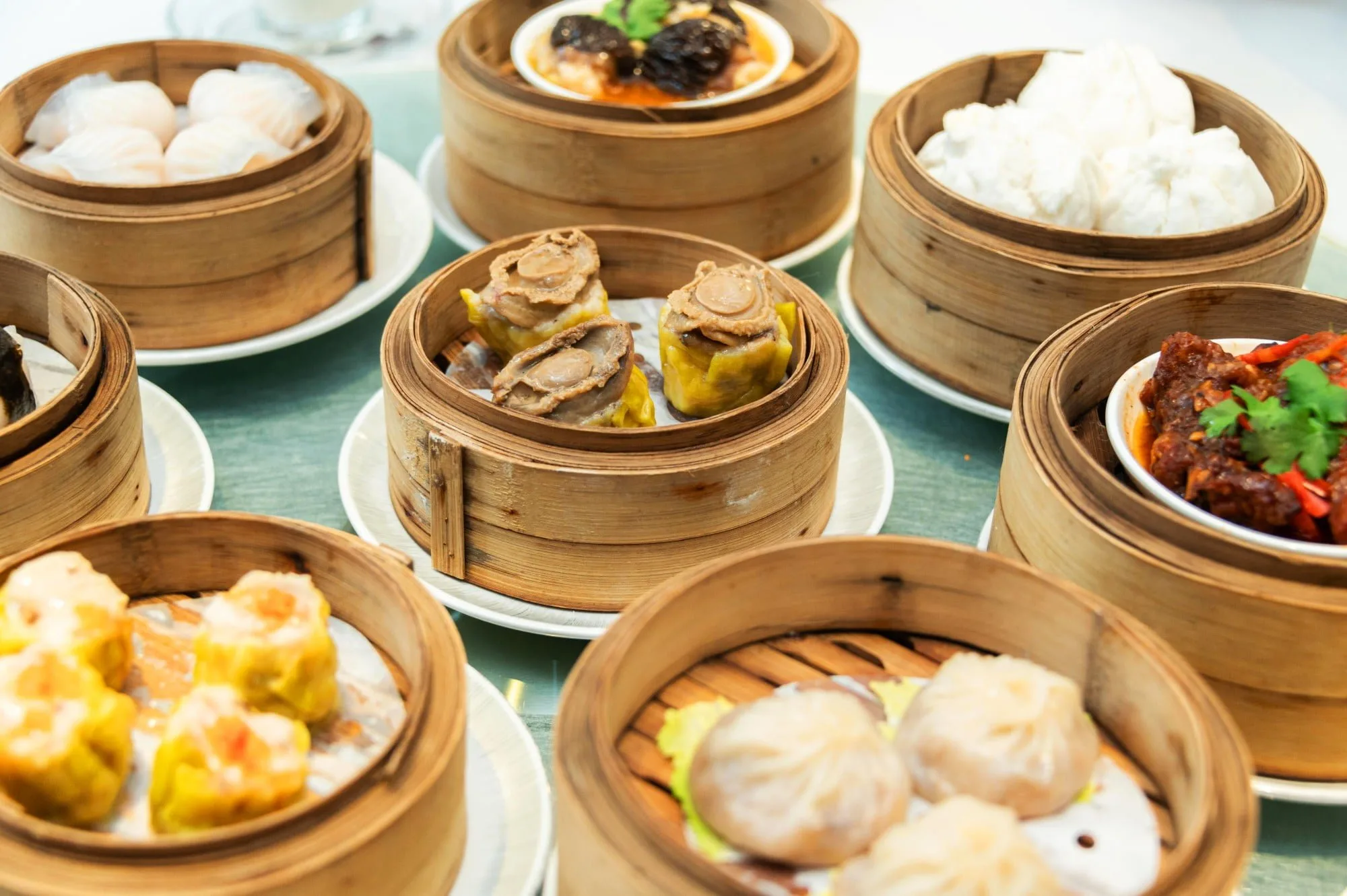Chinese Food
Dim Sum: A Culinary Journey Through Bite-Sized Delights
Dim Sum, a cornerstone of Cantonese cuisine, is much more than just a meal; it’s a cultural experience that brings people together over an array of small, flavorful dishes. Traditionally enjoyed with tea, Dim Sum offers a delightful journey through a variety of tastes, textures, and aromas.
Types of Dim Sum
Dim Sum encompasses a wide range of dishes, each crafted with meticulous attention to detail. Some of the most beloved types include:
- Dumplings: Har Gow (shrimp dumplings) and Siu Mai (pork and shrimp dumplings) are quintessential Dim Sum items. Har Gow, with its translucent, delicate skin, and juicy shrimp filling, is a testament to the chef’s skill. Siu Mai, often garnished with crab roe, provides a savory bite that’s both rich and satisfying.
- Buns: Char Siu Bao (barbecue pork buns) are fluffy steamed buns filled with sweet and savory barbecue pork. Custard Buns, filled with a rich, creamy custard, offer a sweet contrast and are often enjoyed as a dessert.
- Rolls: Cheung Fun (rice noodle rolls) are thin sheets of rice noodles rolled around various fillings like shrimp or beef, served with a sweet soy sauce. Their silky texture and subtle flavors make them a Dim Sum favorite.
- Desserts: Egg Tarts, with their flaky crust and creamy, eggy filling, and Mango Pudding, a refreshing end to a Dim Sum meal, highlight the Cantonese skill in creating delightful sweet treats.
Dim Sum Etiquette
Dining on Dim Sum follows certain traditional etiquettes. Typically, Dim Sum is enjoyed during brunch hours, with friends and family gathering around a table. Tea plays a central role, often starting with the rinsing of cups to symbolize cleanliness and respect. When pouring tea for others, it’s customary to tap the table with two fingers, a gesture of gratitude.
The Art of Making Dim Sum
Creating Dim Sum is an art form that requires precision and patience. Ingredients must be fresh, and the preparation techniques are often passed down through generations. For example, making the perfect Har Gow requires mastering the dough’s elasticity to achieve the right balance between chewy and tender.
The presentation is also crucial. Each dish is crafted to be visually appealing, often garnished with bright vegetables or herbs to enhance its appearance.
Dim Sum Around the World
Dim Sum has transcended its Cantonese origins, becoming a global culinary phenomenon. In cities like Hong Kong, San Francisco, and London, Dim Sum restaurants are popular dining spots. While traditional dishes remain staples, chefs around the world have introduced innovative variations, incorporating local ingredients and flavors.
Dim Sum is a celebration of Cantonese culinary artistry, combining a variety of flavors and textures into a communal dining experience. Whether you’re a seasoned Dim Sum enthusiast or a curious newcomer, exploring the world of Dim Sum offers a delightful journey through one of the most beloved aspects of Chinese cuisine. The enduring appeal of Dim Sum lies in its ability to bring people together, one small bite at a time.

